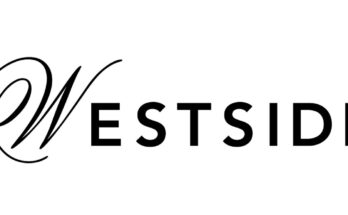South India emerges as most financially protected region with a Protection Quotient of 47: Max Life’s India Pro tection Quotient 5.0 Survey
| Key Findings of the Survey
· With a Protection Quotient of 47, the South zone is 4 points ahead of urban India’s overall IPQ of 43; continues to remain the top zone across India for five years · The South zone also boasts the highest LI ownership (78%) among other zones in IPQ 5.0 · Prioritizing ownership of savings and term plans over market-linked products, the zone reflects the country’s savings-first preference · While high premium remains the top deterrent for term plan purchase, operational concerns such as medical tests and poor insurer/agent service emerge as stronger barriers · South zone rejigs income allocation, follows the national trend of increase in luxury expenses · The pandemic has compelled both millennials and non-millennials to be more proactive about financial planning; reflecting a sharper protection quotient increase for both segments · Men widen the protection gap with women; have increased LI ownership · Chennai emerges as one of the least financially protected metro cities; Bangalore is the most financially protected metropolitan in the South zone |
9th February 2023, Chennai: Max Life Insurance Company Ltd. (“Max Life”/ “Company”) unveiled the findings of the fifth edition of its flagship survey India Protection Quotient survey (IPQ)* conducted in partnership with KA NTAR, the world’s leading marketing data and analytics company. The survey revealed deep insights into the fin ancial preparedness of urban Indians living in the country’s South region.
As per the study, the country’s southern zone emerges as better financially protected with a Protection Quot ient of 47, four points more than urban India’s overall IPQ of 43. Driven by a renewed sense of financial security and a life insurance ownership rate of 78%, the South zone tops in IPQ among all zones – with the highest rise from the last edition. The survey also reveals that as the rest of urban India returns to normal, the South zone’s security levels also restore to pre-pandemic levels, rising sharply from 65% in IPQ 3.0 to 77% as per IPQ 5.0. Ho wever, the South zone’s Knowledge Index showcased a flat trend (55% in IPQ 3.0 vs 57% in IPQ 5.0), indicating a slowdown in financial literacy and understanding of life insurance products in the region.
From a city perspective, Chennai emerged as one of the least financially protected metro cities in India with a Pr otection Quotient of 38, owing to the lowest adoption of life insurance products of 62% as compared with other metros. Conversely, Bangalore emerged as the most financially protected metropolitan, with a Protection Quotient of 58.
V Viswanand, Deputy Managing Director, Max Life said: “The 5th- edition of our flagship ‘India Protection Quo tie nt’ Survey has revealed the South zone’s pro-activeness in coping with life’s uncertainties. The study has also highlighted the need for better measures to improve awareness and ownership of financial products amongst va rious consumer segments. We are certain that this year’s IPQ findings will largely contribute to highlighting the real value of life insurance as an imperative solution for building long-term financial resilience.”
The following findings reveal insights that highlight the South zone’s shift across financial priorities and anxieties:
- IPQ 5.0 survey reveals the need to boost financial awareness in the South zone
The Knowledge Index shows a flat trend from 55 in IPQ 3.0 to 57 in IPQ 5.0, indicating the need to deepen eff or ts to boost awareness of life insurance products in the region. One of the least financially aware regions of ur ba n India, the South zone lags in Knowledge Index, with the North zone at 58 points and the West zone at 61 poin ts.
- The South zone’s changing preferences showcase a shift in savings and spending allocation; the region prioritizes savings products over term plans
In line with urban India’s savings-first preference, the South zone prioritizes savings over term, with a savings ow nership of 38% and term ownership of 35%. Furthermore, the ownership of market-linked products has seen a sharp rise from 13% in IPQ 3.0 to 18% in IPQ 5.0.
Additionally, with luxury spending in the region resetting to pre-COVID times, the South zone’s urban populat ion increased its income allocation towards luxury spending (15% in IPQ 5.0 vs 11% in IPQ 3.0), with savings and investments witnessing a decline from 51% (IPQ 3.0) to 49% (IPQ 5.0).
- High premiums lose focus, while operational concerns pose significant obstacles to term ownership
While ‘high premiums’ remain the top barrier to term plan purchase, the IPQ 5.0 survey notes a sharp decline in the percentage of people citing cost as a deterrent, with 31% in IPQ 3.0 to 24% in IPQ 5.0 study. Operational rea sons now emerge as strong barriers to term insurance purchase, with 22% citing the ‘need to undergo medical te sts’ as a barrier and 21% naming ‘poor service of insurer or agent’ as an obstacle in owning term plans.
- Shifting demographic behavior: Men widen the gap with women in financial protection and LI ownership; Millennials narrow the gap with non-millennials in financial protection
Both millennials and non-millennials have made giant strides on the protection quotient scale, with a 6 points ri se in the IPQ of millennials, from 41 in IPQ 3.0 to 47 in IPQ 5.0, and that of non-millennials – an 8 points increase from 40 in IPQ 3.0 to 48 in IPQ 5.0. While the millennial segment is almost at par with non-millennials in terms of financial protection, the survey showcases a wide gap in life insurance uptake – with millennial LI ownership at 7 1% as compared to non-millennial LI ownership at 77%. Additionally, the survey has showcased a 5 points gap in the protection quotient between the male (49) and female cohorts (44). Similarly, in terms of LI ownership, males reflect a 4-percentage difference (79%) as compared to females (75%) in the South zone.
- Protection quotient of salaried and self-employed individuals on an upswing; LI ownership for the salaried class is a revelation
Mirroring the protection quotient increase amongst millennials and non-millennials, the salaried and self-emp loyed class of the South zone has shown remarkable improvement in the protection quotient. While the salaried class has returned a 9 points increase (from 42 in IPQ 3.0 to 51 in IPQ 5.0), the self-employed category has witne ssed a 6 points improvement (from 43 in IPQ 3.0 to 49 in IPQ 5.0). However, in LI ownership, the self-employed c ategory has returned flat indices of 80% (80% in IPQ 3.0), while the salaried class has witnessed an 8% increase from 72% (IPQ 3.0) to 80% (IPQ 5.0).
- Bangalore and Chennai, two ends of the spectrum – Chennai is one of the least financially protected metros; Bangalore is the most financially protected metro city
With a Protection Quotient of 38, Chennai emerged as one of the least financially protected metro cities. Con versely, Bangalore emerged as the most financially protected metropolitan, with a Protection Quotient of 58 – at par with Mumbai’s IPQ. Hyderabad stood out as one of the most financially secure metropolitans, with a Se curity Level of 80%, closely following Bangalore, which has the highest security level in the country at 84%.
About India Protection Quotient
Instituted in 2019, India Protection Quotient is an annual survey by Max Life in association with Kantar aimed to understand the pulse of the Indian consumers in the financial protection space. Launched with the sub-objective to increase uptake of term insurance, as the most fundamental and economical form of life insurance, the survey aims to reveal the state of urban Indians with regards to current financial security levels, changing savings & inve stment patterns, key anxieties & triggers of financial protection in a contemporary world. India Protection Quoti ent the degree to which Indians feel protected from future uncertainties, on a scale of 0 to 100, is a proprietary to ol developed in partnership with Kantar. It is based on the attitudes, mental preparedness around future unc ertainties, awareness, and ownership of life insurance product categories (term, endowment and Unit Linked pl ans).
About Max Life Insurance (www.maxlifeinsurance.com)
Max Life Insurance Company Limited is a Joint Venture between Max Financial Services Limited and Axis Bank Limited. Max Financial Services Ltd. is a part of the Max Group. Max Life offers comprehensive protection and long-term savings life insurance solutions, through its multi-channel distribution including agency and third-pa rty distribution partners.
Max Life has built its operations over two decades through a need-based sales process, a customer-centric appr oach to engagement and service delivery and trained human capital. As per public disclosures and annual audit ed financials for FY2021-22, Max Life has achieved a gross written premium of INR 22,414 crore.
For more information, please visit the Company’s website at www.maxlifeinsurance.com
* Wherever 5th anniversary is mentioned, means 5th anniversary edition of India Protection Quotient.
Disclaimer:
The study is conducted in top 25 Urban metro, Tier 1 and Tier 2 cities; hence, its findings are representative of metro, Tier 1 and Tier 2 cities of Urban India only.
- Metro – Delhi, Kolkata, Chennai, Bangalore, Hyderabad, Mumbai
- Tier 1 – Ludhiana, Jaipur, Lucknow, Patna, Bhubaneshwar, Vizag, Ahmedabad, Bhopal, Pune
- Tier 2 – Dehradun, Moradabad, Guwahati, Bokaro, Kolhapur, Jamnagar, Raipur, Ujjain, Hubli-Dharwad, Tiruchirappalli
- IPQ 5.0 Express vs IPQ 3.0 Express data comparison is amongst 25 markets only [6 metros, 9 Tier 1 and 10 Tier 2]
- The minimum sample to conclude any findings of the study is 270 with an error margin of +-5.964%.
About Kantar
Kantar is the world’s leading marketing data and analytics company. We have a complete, unique and rounded understanding of how people think, feel and act; globally and locally in over 90 markets. By combining the deep expertise of our people, our data resources and benchmarks and our innovative analytics and technology, we h elp our clients understand people and inspire growth. To know more, visit www.kantar.com




